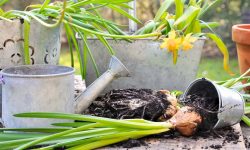Every spring, Texas transforms into a breathtaking canvas of vibrant blue as bluebonnets blanket fields, roadsides, and open prairies. These iconic wildflowers are not only the state flower of Texas but also a symbol of pride, beauty, and tradition. Their arrival signals the start of a magical season that draws travelers, photographers, and nature lovers alike.
Knowing when bluebonnets bloom is the key to experiencing this natural wonder at its peak. The timing can vary each year depending on weather, rainfall, and region, making the chase for these blooms both exciting and rewarding. With the right planning, you can witness the unforgettable sight of endless blue fields glowing under the Texas sun.
Understanding Bluebonnets in Texas

Bluebonnets are the official state flower of Texas and a symbol of springtime beauty. Their brilliant blue petals create breathtaking fields that draw visitors from across the country. To enjoy this spectacular display in your garden, it is essential to understand their unique growth cycle. These wildflowers are hardy annuals that thrive in specific conditions and climates. Texas offers the perfect environment, but timing is everything when planting their seeds.
The life cycle of bluebonnets starts long before spring arrives. Seeds must be sown at the right time to allow them to establish strong root systems before blooming. Unlike many flowers that are planted in spring, bluebonnets require fall planting for success. This period gives them months to prepare for their vibrant showcase when warmer days return. The plant’s adaptation to Texas seasons explains why their timing differs from other wildflowers.
If you want a yard full of bluebonnets, patience and planning are crucial. Planting too late or too early will affect germination and blooming. By learning about their seasonal needs, gardeners can align with nature’s rhythm. A clear understanding of when and how bluebonnets grow helps ensure a lush carpet of color every spring. With the right approach, you can transform your landscape into a Texas-style meadow.
The Importance of Timing in Planting
Planting bluebonnet seeds requires precision because their germination is tied to seasonal weather changes. The timing influences how well they root and how spectacular their blooms will be. Unlike perennials, these annuals need to start fresh every year from seed. This means careful planning determines whether your garden thrives or struggles. Planting at the right time ensures the strongest possible display in spring.
Fall is the ideal planting season for bluebonnets. From September through November, the soil is still warm but cooling down. This temperature range allows seeds to settle in and begin developing roots. The young plants grow quietly during winter and are ready to bloom once spring temperatures rise. Planting in fall mimics the natural process that occurs in Texas prairies. This explains why wild bluebonnets return so consistently each year.
Missing the proper planting window can lead to disappointment. Seeds planted too late in winter do not establish strong roots before blooming season. Those sown too early in summer may fail due to excessive heat. Understanding this timing ensures gardeners avoid common mistakes. With proper scheduling, you set the stage for healthy plants that survive winter and burst into color in spring. Timing is not just important; it is the key to success.
Best Season for Planting Bluebonnets
In Texas, the best season for planting bluebonnet seeds is autumn. Fall planting allows seeds to germinate under cooler conditions while avoiding the intense summer heat. The soil temperature during fall is ideal for promoting early root growth. This root development is essential for survival through winter and strong blooming in spring. Fall planting mirrors the natural cycle of wild bluebonnets that flourish across Texas fields.
September through November is the recommended window for sowing seeds. Earlier in fall, the soil retains enough warmth to trigger germination. As temperatures gradually cool, seedlings continue developing underground. They spend the winter months forming healthy root systems that will support spring flowers. This natural rhythm ensures that by March or April, the plants are ready to burst into vibrant blooms. Planting in this window is the most reliable approach for gardeners.
Some gardeners may wonder about planting in spring, but this often leads to weaker plants. Seeds sown in spring lack the long establishment period needed for strong growth. The shorter timeline limits their ability to produce the iconic fields of blue. By contrast, fall planting prepares them to thrive in spring. Choosing the best season is essential for success. Following nature’s schedule ensures vibrant Texas-style displays every year.
Preparing Soil for Bluebonnets
The soil where you plant bluebonnet seeds plays a major role in their success. Bluebonnets prefer well-drained soils that do not hold excessive moisture. Heavy clay or poorly drained areas can lead to root rot and failure. Sandy or loamy soils allow water to move freely, creating healthier growing conditions. Preparing the soil properly before sowing seeds improves germination and survival rates significantly.
Before planting, clear the area of weeds, grass, and debris. Competition from other plants reduces the chances of successful germination. Loosen the soil with a rake or light tilling to create a receptive seedbed. This process helps seeds make good contact with the soil surface. Bluebonnets do not require deep planting, but they do need firm contact with soil particles. A clean, loose surface ensures seeds settle properly for growth.
Adding amendments may be necessary if the soil is poor. Avoid high-nitrogen fertilizers, as bluebonnets are legumes that produce their own nitrogen. Instead, focus on correcting drainage and texture. Some gardeners add sand or organic matter to improve soil quality. Proper soil preparation before planting greatly increases your success rate. With the right foundation, bluebonnet seeds will establish quickly and reward you with vibrant blooms.
Scarification: Helping Seeds Germinate
Bluebonnet seeds have a very hard outer coating that makes germination challenging. In the wild, natural weathering and soil movement help break this coat. For gardeners, a process called scarification speeds up germination. Scarification involves lightly scratching or nicking the seed coat to allow moisture inside. This simple step dramatically improves germination rates and ensures more successful growth.
One common method is rubbing seeds gently with sandpaper. Another technique is carefully nicking the outer shell with a knife or nail clippers. The goal is to create a tiny opening without damaging the inner seed. Once scarified, the seeds can absorb water more easily and sprout faster. Without scarification, many seeds may remain dormant in the soil for months or even years. For timely blooms, this preparation is important.
Scarification should be done just before planting. Once seeds are prepared, scatter them over the soil and press them down lightly. Do not bury them too deep, as bluebonnet seeds need light exposure to germinate. Scarified seeds usually show signs of growth more quickly than untreated ones. This method increases your chances of seeing strong blooms in spring. For gardeners seeking reliable results, scarification is a valuable technique.
Choosing the Right Location
Location matters greatly when planting bluebonnet seeds. These flowers thrive in full sun and need at least eight hours of sunlight daily. Planting them in shaded areas reduces their vigor and bloom potential. Bluebonnets also prefer open spaces where they can spread naturally. Choosing a site with ample sunlight ensures healthy growth and abundant flowers in spring.
In addition to sunlight, consider drainage and soil texture. Avoid planting in areas that hold standing water after rainfall. Bluebonnets cannot tolerate soggy conditions, which lead to root diseases. Slopes, raised beds, or naturally well-drained fields provide the best results. Wide, open areas not only help the plants thrive but also recreate the look of natural Texas fields. Choosing the right spot enhances both survival and aesthetics.
Another factor is visibility and enjoyment. Plant bluebonnets in areas where their beauty can be appreciated. Borders, meadows, and open yards make ideal locations. By planning carefully, you can create a breathtaking spring landscape. When you combine the right timing with the right location, your garden will mirror Texas highways in bloom. Location selection plays a key role in achieving vibrant displays.
Watering Needs After Planting
Water is essential for seed germination, but bluebonnets do not need excessive amounts. After planting, a light watering helps settle the seeds into the soil. This first watering ensures seeds have the moisture they need to start germinating. However, overwatering can lead to problems like rotting or poor root development. Striking the right balance between too much and too little water is critical.
During fall, natural rainfall in Texas often provides adequate moisture. Supplemental watering may be needed if conditions are unusually dry. Water lightly but consistently until seedlings become established. Once the plants develop roots, they are fairly drought-tolerant. Bluebonnets adapt well to the Texas climate, which means less maintenance for gardeners. Allow the soil to dry slightly between waterings to prevent issues.
In winter, reduce watering significantly, as plants are semi-dormant. By spring, natural rains usually sustain the plants through their blooming period. Excessive watering during this time can harm root health. Overall, bluebonnets are low-maintenance when it comes to water. Careful watering after planting ensures healthy establishment and strong spring displays. Proper moisture management is a key step in successful cultivation.
Companion Plants for Bluebonnets
Pairing bluebonnets with companion plants enhances your garden’s beauty and diversity. These companions provide contrast in color and texture, creating a natural wildflower look. Popular choices include Indian paintbrush, coreopsis, and gaillardia. These flowers share similar growing conditions and bloom around the same time. Together, they create a vibrant and dynamic spring display in your garden.
Companion plants also support pollinators like bees and butterflies. By combining different species, you create a habitat that attracts beneficial insects. This helps both your bluebonnets and other flowers thrive. Many native Texas wildflowers make excellent companions because they share the same seasonal cycles. Planting them together enhances resilience and reduces the need for extra care. They thrive in the same soil and sunlight conditions, making maintenance easier.
Choosing companions also allows you to extend the blooming season. While bluebonnets dominate in spring, other wildflowers continue into summer. This ensures your garden remains colorful beyond the bluebonnet season. By mixing plants strategically, you can enjoy months of beauty.
Fertilizing Bluebonnets Naturally
Using Compost for Healthy Growth
Compost is one of the most effective natural fertilizers for bluebonnets because it improves soil structure while retaining moisture. When mixed into the soil before planting, compost provides a slow and balanced release of nutrients that young roots can absorb over time. This gradual supply supports steady development without creating excess nitrogen, which often causes more foliage than flowers. In addition, compost encourages beneficial microorganisms that enhance soil health and protect seedlings from harmful diseases. By building a healthier underground environment, compost creates stronger, more resilient plants that flourish naturally.
In the challenging Texas climate, compost is especially valuable because local soils are often sandy and low in organic matter. A thin layer of compost spread around the base of young plants in early spring or fall helps retain water, reduce soil erosion, and boost nutrient levels. Regular use not only improves soil fertility but also enhances moisture consistency during dry periods. This simple, sustainable practice ensures bluebonnets establish strong roots and bloom beautifully each season.
The Role of Organic Mulch in Soil Fertility
Organic mulch is another natural method that strengthens soil fertility while protecting bluebonnet seedlings. Applying a thin layer of mulch such as straw, shredded leaves, or bark around the base of the plants creates a stable environment for root growth. Mulch keeps the soil temperature consistent, reduces evaporation, and limits competition from weeds that might steal essential nutrients. Over time, mulch naturally decomposes, releasing organic material that enriches the soil. This process improves soil texture and boosts nutrient availability without disrupting the balance required for healthy flowering.
In Texas, where temperatures can fluctuate drastically, mulch provides an extra layer of protection for young plants. During hot summers, it keeps the soil cooler and reduces water loss, while in colder months, it insulates the roots against frost. These dual benefits make organic mulch a reliable choice for year-round support. Beyond its practical advantages, mulch also enhances the garden’s appearance, offering a neat and natural look that complements blooming bluebonnets.
Protecting Seedlings from Pests
Identifying Common Bluebonnet Pests
Young bluebonnet seedlings face significant threats from a variety of garden pests, most notably caterpillars, aphids, and slugs. These insects are particularly drawn to tender new leaves, where they feed and weaken the plant’s ability to establish strong growth. Without intervention, heavy infestations can cause stunted development or even kill seedlings before they have the chance to mature into hardy plants. Because of this, close observation during the early stages of germination is essential for maintaining plant health.
Gardeners should look for clear signs of pest activity, such as chewed or ragged leaves, drooping stems, or a sticky residue often left behind by aphids. Acting quickly prevents small problems from escalating into severe damage. Handpicking caterpillars or gently spraying aphids with water can provide effective control in minor cases. For more widespread issues, organic methods like mild soap sprays or diatomaceous earth offer safe alternatives that protect both the seedlings and the surrounding environment. With proactive care, bluebonnets can grow vigorously despite pest challenges.
Natural Methods for Pest Prevention
Preventing pests naturally is always more effective than controlling an infestation later. One highly effective approach is to attract beneficial insects that act as natural predators. Ladybugs, lacewings, and parasitic wasps feed on common pests such as aphids, keeping their populations under control without the need for chemical sprays. Planting companion flowers like marigolds, lavender, or daisies near bluebonnets creates an inviting habitat for these beneficial insects. This diversity not only enriches the garden visually but also builds a stronger ecosystem where pests struggle to dominate. By encouraging this natural balance, gardeners can protect bluebonnets in a sustainable way.
Besides beneficial insects, several physical and environmental strategies can help keep pests away. Sprinkling a thin layer of diatomaceous earth around plant bases is a safe, natural method that deters crawling insects like slugs and ants. Proper plant spacing improves airflow and prevents overly damp conditions, which attract pests such as fungal gnats. Regularly inspecting seedlings and removing weak or diseased plants also lowers the chance of outbreaks. When combined, these natural methods form a strong defense system, ensuring bluebonnets thrive in a healthier and more resilient garden environment.
Mistakes to Avoid and How to Solve
Overwatering and Root Rot
One of the most common mistakes gardeners make is giving their plants too much water. While it may seem like frequent watering helps plants thrive, excessive moisture can suffocate the roots and lead to root rot. This condition prevents the plant from absorbing nutrients properly and often results in yellowing leaves, weak stems, and eventual decline. In many cases, overwatering happens because the soil is not draining well, or gardeners water on a strict schedule rather than checking the plant’s actual needs.
To solve this issue, always check the soil before watering by inserting your finger a few inches deep. If the soil feels damp, wait a day or two before watering again. Choosing well-draining soil and pots with drainage holes also helps prevent water from sitting around the roots. If root rot has already developed, trimming away affected roots and repotting the plant in fresh soil can often save it. This approach encourages healthier root growth and restores the plant’s vitality.
Planting in Poor Soil
Another frequent mistake is planting in soil that lacks essential nutrients or has poor structure. Compacted or clay-heavy soil can restrict root development and block proper drainage. On the other hand, overly sandy soil drains too quickly, preventing the plant from absorbing water and nutrients. In both cases, the plant struggles to grow, showing weak stems, pale leaves, and fewer blooms. Neglecting soil quality often leads to long-term issues that are difficult to fix later.
The best solution is to prepare the soil before planting. Mix in organic matter such as compost or well-rotted manure to improve fertility and structure. If the soil is heavy, add sand or perlite to increase aeration and drainage. For sandy soils, more compost helps retain moisture and nutrients. Regularly replenishing the soil with organic matter keeps it balanced over time. By investing effort in soil preparation, you create the ideal foundation for strong roots, healthier plants, and abundant flowering.
Ignoring Pruning Needs
Many gardeners either avoid pruning altogether or prune incorrectly, which can harm the plant’s natural growth cycle. Skipping pruning causes overcrowded branches, leading to poor air circulation and higher risk of pests or diseases. On the other hand, cutting too much or at the wrong time may remove flower buds, drastically reducing blooms for the next season. This mistake often comes from fear of damaging the plant or lack of knowledge about pruning techniques.
To solve this, learn the specific pruning requirements of your plant species. Prune lightly after the blooming season to shape the plant while preserving buds for the next cycle. Remove dead, weak, or crossing branches to improve airflow and light penetration. Always use clean, sharp tools to prevent disease transmission. Following seasonal guidelines ensures that pruning supports healthy growth rather than hindering it. With consistent practice, pruning becomes a valuable tool to encourage more flowers, stronger branches, and long-term plant health.
Overcrowding Plants
One of the most common mistakes gardeners make with bluebonnets is overcrowding seeds or young plants. When too many seedlings are sown close together, they compete for sunlight, nutrients, and water. This competition weakens the plants, leading to stunted growth and fewer blooms. Bluebonnets, like many wildflowers, need space to thrive and develop strong root systems that will support healthy flowering. Without proper spacing, the dense growth can also create a humid environment that fosters fungal diseases.
To solve this problem, always follow recommended spacing guidelines when sowing seeds, typically about 6 to 12 inches apart. If you notice overcrowding after germination, carefully thin out weaker seedlings to give stronger ones more room to grow. Transplanting is not recommended for bluebonnets, so thinning early is the most effective solution. Proper spacing ensures that each plant receives enough resources, resulting in a more vibrant and balanced display of blooms across your garden.
Neglecting Soil Preparation
Another frequent mistake is neglecting proper soil preparation before planting bluebonnet seeds. These flowers naturally grow in Texas prairies where the soil is well-drained and often slightly alkaline. Planting seeds in compacted or poorly drained soil reduces germination rates and increases the risk of root rot. Without the right soil conditions, even healthy seeds may fail to establish. This mistake often discourages beginners who expect easy growth without adjusting their garden’s soil.
To avoid this issue, take time to prepare the planting area by loosening compacted soil and removing weeds that compete for nutrients. Mixing in sand or gravel can improve drainage if your soil tends to retain too much water. Additionally, conducting a soil test to check pH levels ensures that the environment is suitable for bluebonnets. Amending the soil before planting makes a significant difference in seed establishment and future blooms, leading to a healthier and more resilient bluebonnet patch.
Planting Too Deeply
One common mistake many gardeners make when planting is setting the plant too deep in the soil. While it might seem logical that deeper planting provides more support, it often leads to problems with root development and stem rot. When the crown of the plant is buried under heavy soil, it can trap excess moisture, causing fungal diseases to spread quickly. Shallow-rooted plants may also struggle to access oxygen, which is essential for strong growth. Over time, this stress weakens the plant, making it more vulnerable to pests and poor flowering.
The solution is to ensure the plant sits at the correct depth, usually with the crown just at or slightly above soil level. This allows for proper airflow and reduces the chance of rot. Before planting, loosen the soil and check the root ball’s height to match the planting hole. Adding a thin mulch layer around, but not on top of the crown, helps retain moisture while keeping the base dry. Correct planting depth sets a strong foundation for long-term success.
Choosing the Wrong Location
Another frequent mistake is selecting an unsuitable planting location. Plants have specific light and soil requirements, and ignoring these can severely impact their health. For example, placing a sun-loving plant in a shaded corner often results in leggy, weak stems and minimal blooms. Conversely, shade-preferring species exposed to harsh afternoon sun can suffer from scorched leaves and heat stress. Similarly, planting in poorly drained areas can lead to waterlogged roots, which is one of the main causes of plant death.
To avoid this issue, research the plant’s natural habitat and replicate those conditions in your garden. Observe how much sunlight the area receives throughout the day and adjust accordingly. Amending soil with compost or sand can also improve drainage if needed. For tricky spots, consider raised beds or containers that offer greater control. By carefully matching the plant’s needs with the right location, gardeners can prevent unnecessary stress and ensure stronger, healthier growth with more abundant blooms.
Frequently Asked Questions About When Bluebonnets Bloom in Texas
How often should I water my plant to keep it healthy?
Watering depends on climate and soil type, but most plants prefer deep watering once or twice a week rather than frequent light watering. Deep watering encourages roots to grow stronger and access nutrients effectively, leading to healthier growth. Always check soil moisture before watering to prevent overwatering.
What type of soil works best for strong plant growth?
Most flowering plants thrive in well-draining, nutrient-rich soil with a balanced mix of sand, silt, and organic matter. Good soil prevents waterlogging while still holding enough moisture. Adding compost or organic mulch improves fertility, supports microbial activity, and ensures consistent nutrients for long-lasting healthy growth and blooms.
Why are my plant’s leaves turning yellow?
Yellowing leaves often signal overwatering, nutrient deficiency, or poor drainage. Plants may also react to sudden environmental changes like temperature drops or low sunlight. Checking soil moisture, improving drainage, and applying a balanced fertilizer usually solves the problem. Pruning damaged leaves helps the plant redirect energy to healthy growth.
How can I encourage more blooms each season?
Consistent pruning, adequate feeding, and proper sunlight are essential for abundant flowering. Removing spent blooms encourages the plant to produce new buds instead of forming seeds. Applying a phosphorus-rich fertilizer during the growing season supports stronger flower production. Regular care ensures bigger, longer-lasting blooms every season.
What is the best way to protect plants from pests naturally?
Using natural remedies such as neem oil, garlic spray, or insecticidal soap helps deter pests without harming beneficial insects. Companion planting, like marigolds with vegetables, also provides natural pest resistance. Regular inspection of leaves and stems ensures early detection, allowing quick treatment before infestations become difficult to control.
Conclusion
Bluebonnets are more than just flowers; they are symbols of Texas pride and the beauty of spring. Knowing when and where they bloom allows you to fully enjoy their stunning display and create memorable adventures. With the right timing, respect for nature, and a sense of wonder, you can experience fields of blue that stretch endlessly under the Texas sky. Whether you’re a local Texan or a traveler seeking spring magic, chasing bluebonnets offers unforgettable joy. Plan ahead, explore responsibly, and let these iconic blossoms guide you into the heart of Texas springtime.






